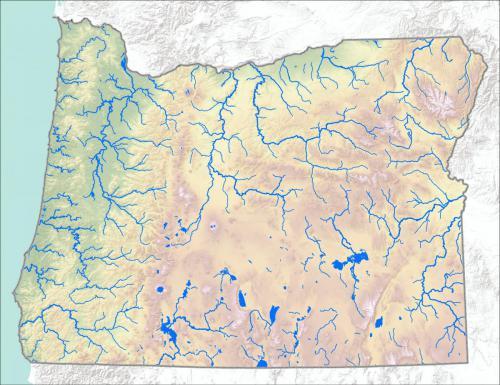State-Wide Monitoring Framework

Oregon has 71 known native freshwater fish species, as well as a number of subspecies. These species are distributed throughout the state across vastly different ecosystems, from low gradient coastal rivers to the high elevation mountain streams. Currently, only a small percentage of these species have some form of monitoring or data collection, and many of those programs were put into place in response to listings under the Endangered Species Act (ESA) and are focused on a single species. The monitoring has provided data that is critical to informing harvest and progress towards recovery, as well as generally improving our understanding of occupancy, population dynamics and habitat distribution for a subset of fish species. However, a number of issues have highlighted the need to evaluate ODFW’s current approach to monitoring and the link between data collection and decision making. These include the long term cost commitment, difficulty interpreting the results of long term monitoring data, limited ability to document trend with certainty or assess effectiveness of management actions, difficulty sharing data, difficulties providing science based recommendations for management to mitigate against the effects of climate change, and a general lack of a decision framework on which management can act. Additionally, we lack basic information about many species.
Oregon needs an integrated monitoring framework that covers all species, is economically viable, and can adapt and incorporate best available science in statistical and modeling techniques, genetics, remote sensing, decision support tools, and ecosystem theory.
The REDD group is working to develop a statewide framework that will provide a more integrated pathway forward for data collection, organization, analysis, and decision support for Oregon’s native fish now and into the future. Our goal is to provide a framework for research and monitoring for all species so we can not only determine current status but also better understand the factors influencing species persistence and resilience, including the distribution of non-native species and the impacts of a changing climate.
To do this, the REDD group is looking at both single species and multi-species approaches.
- We are working with the USGS Forest and Rangeland Ecosystem Science Center (FRESC) to understand how range extent, biological traits, and climate change influences the vulnerability of native fish, amphibians, and reptiles. This will be the first step to identify gaps in our knowledge and determine where we need more information.
- We are working with the USGS to use and refine a bull trout vulnerability assessment for recovery planning in Oregon. Bull trout are uniquely adapted to cold water, making them particularly sensitive to climate-related disturbances.
- We are combining ODFW’s extensive dataset for salmon/steelhead and habitat with the latest geostatistical and process models to understand how fish species that are widely but variably distributed in both space and time are influenced by not only terrestrial and hydrologic processes but variations in climate and temperature.